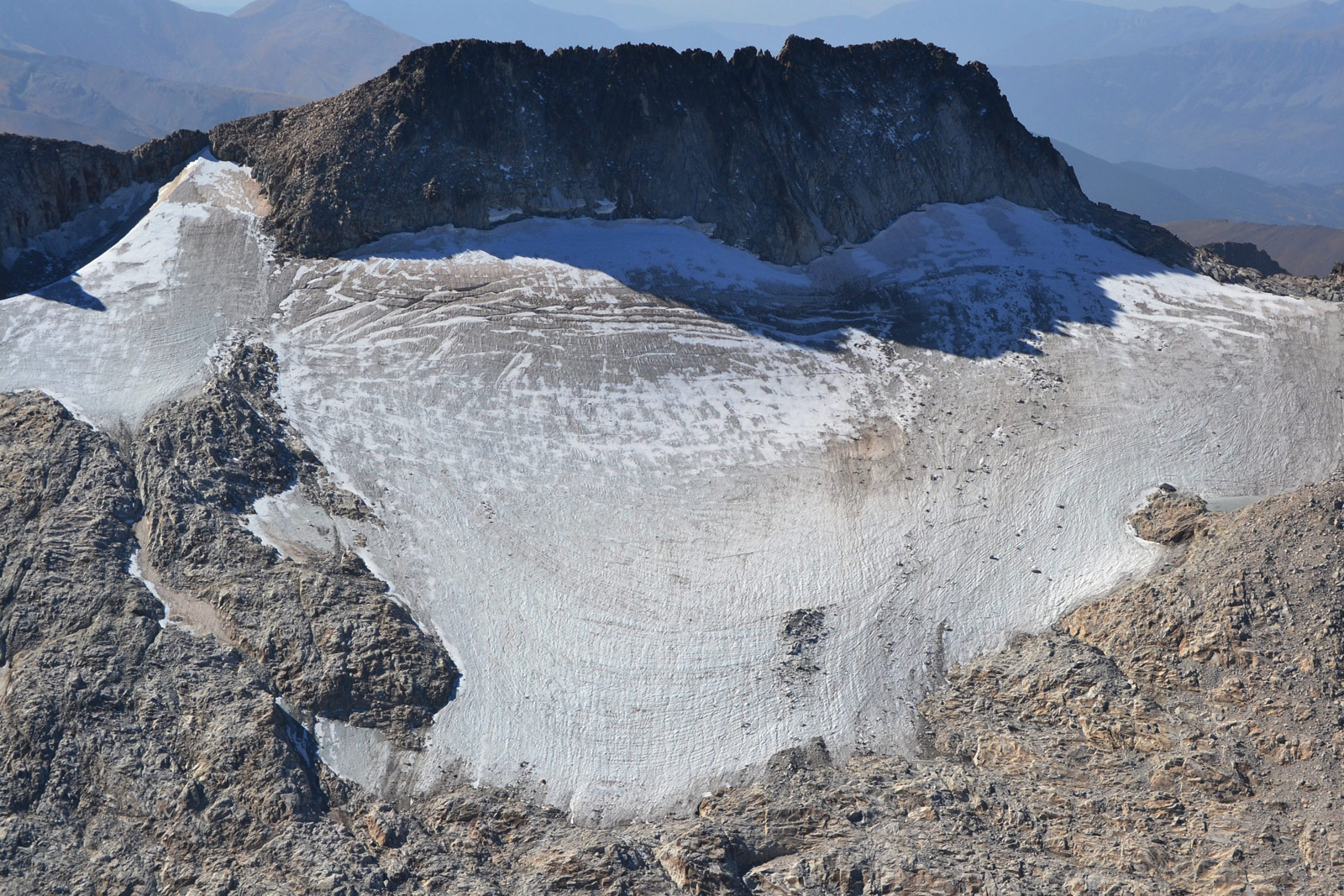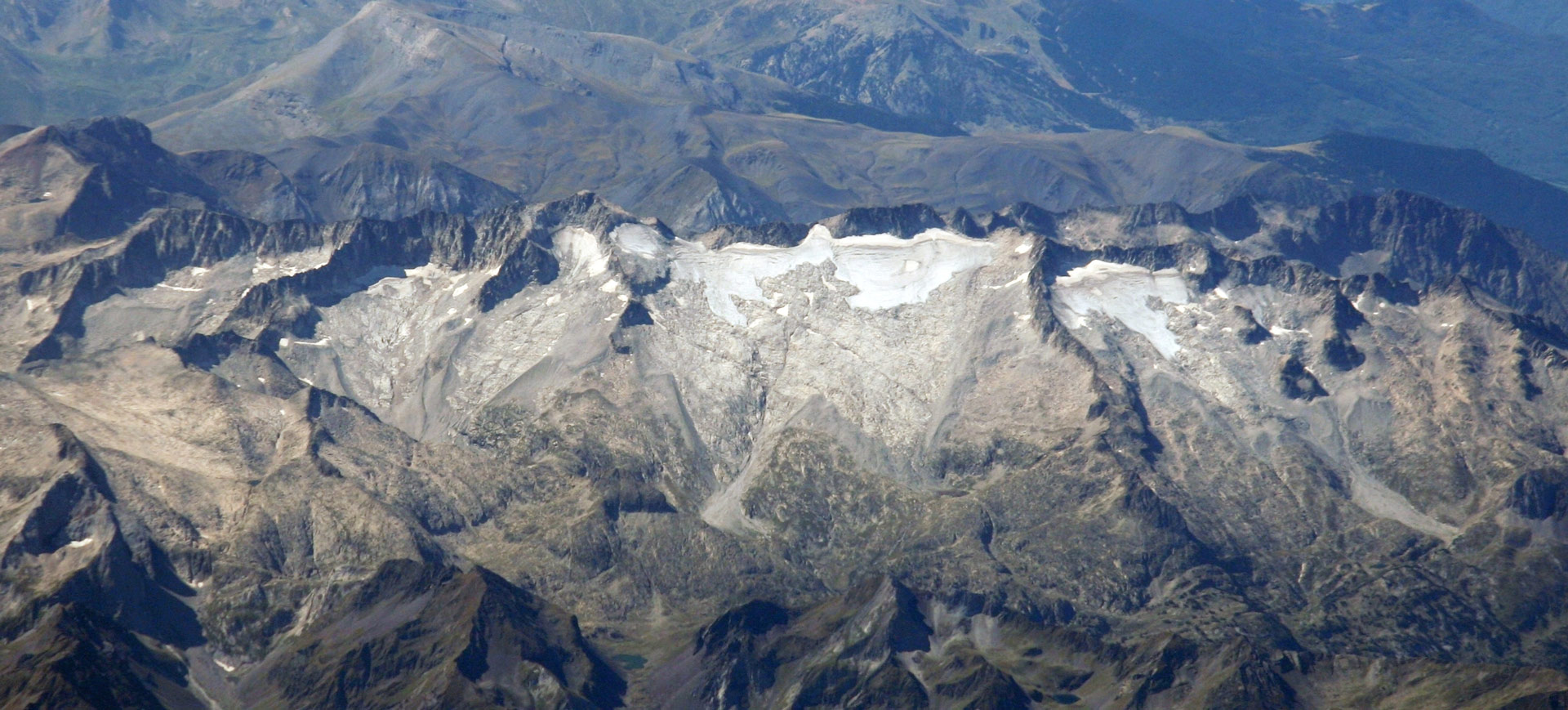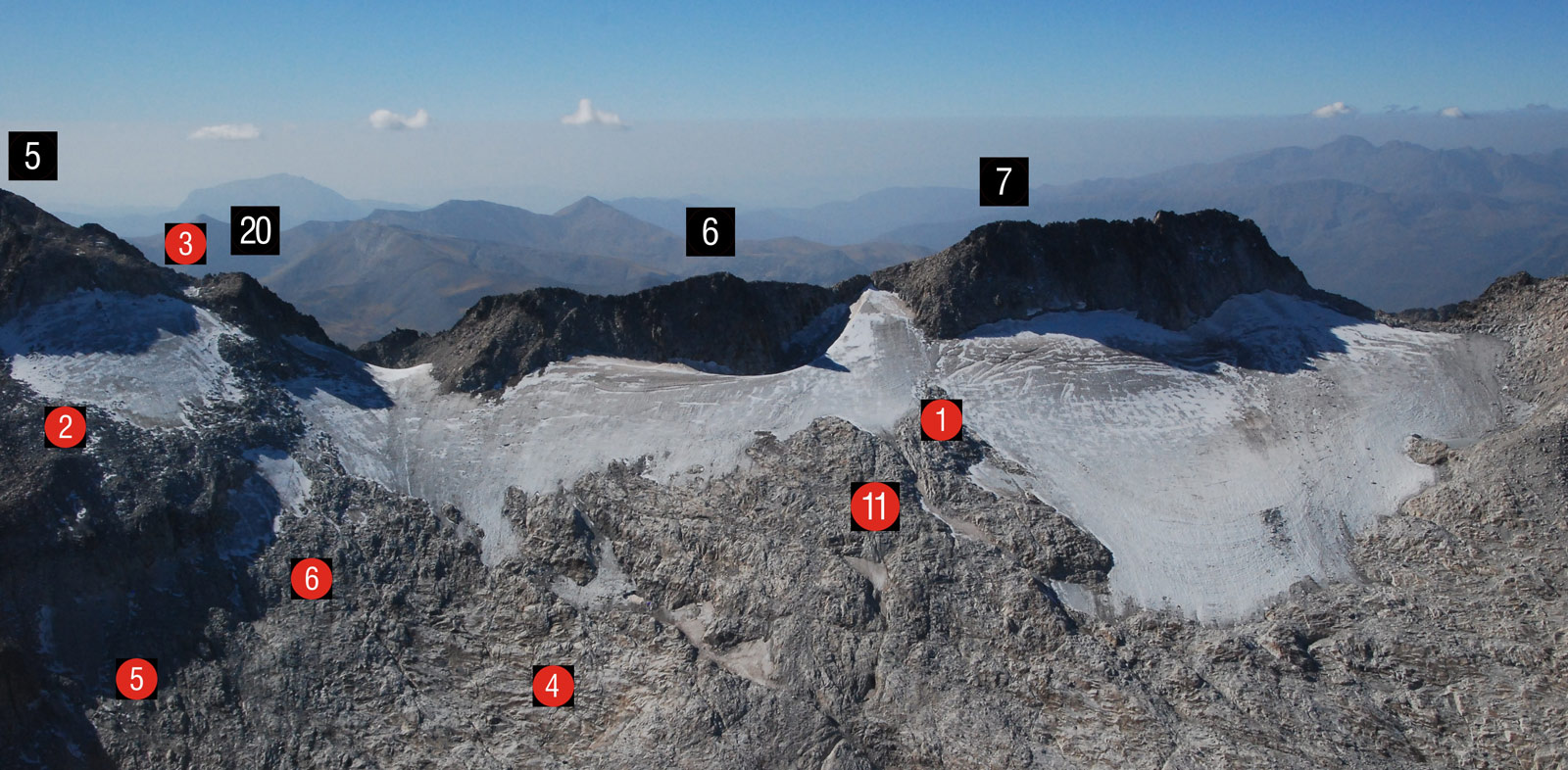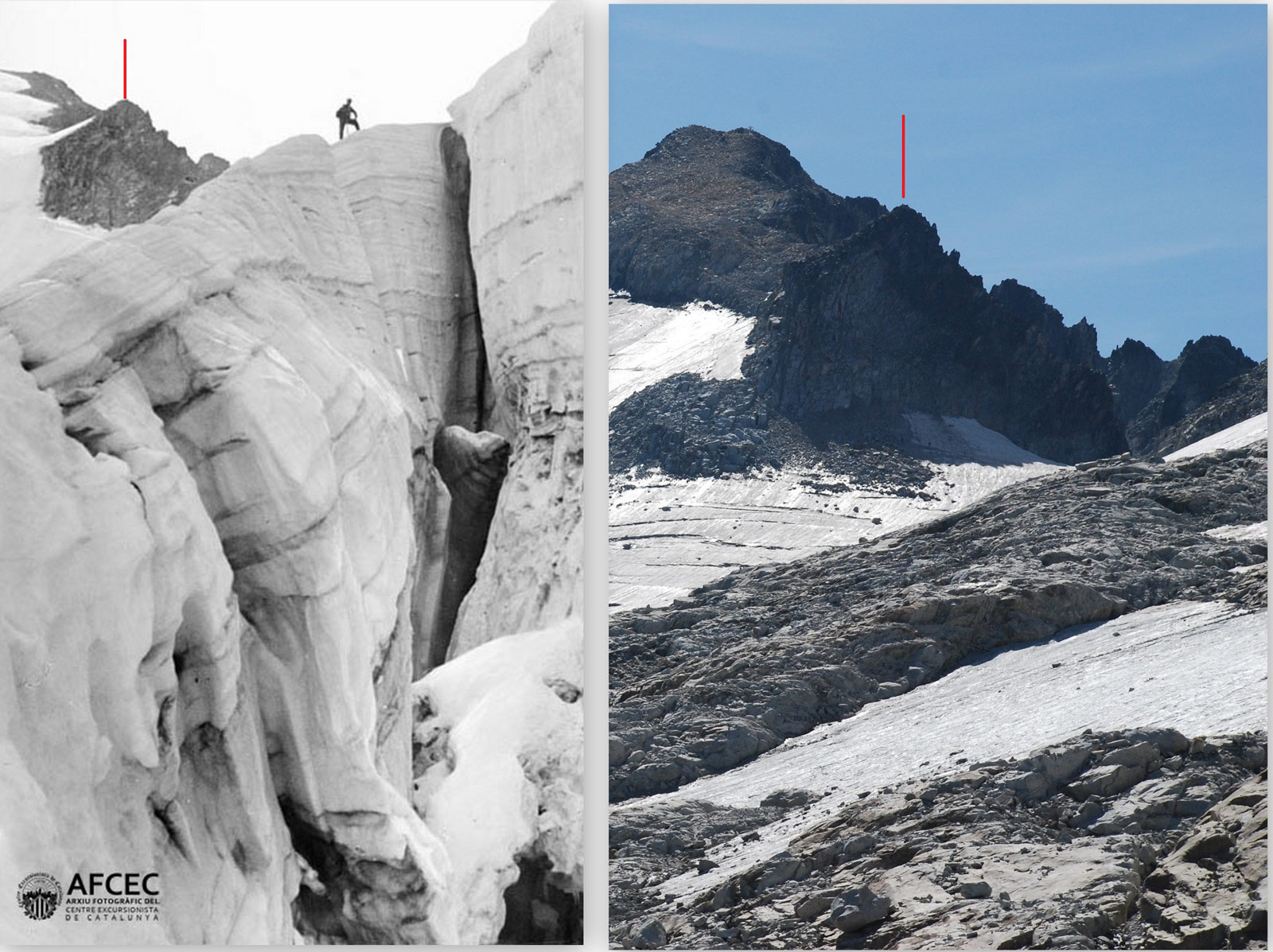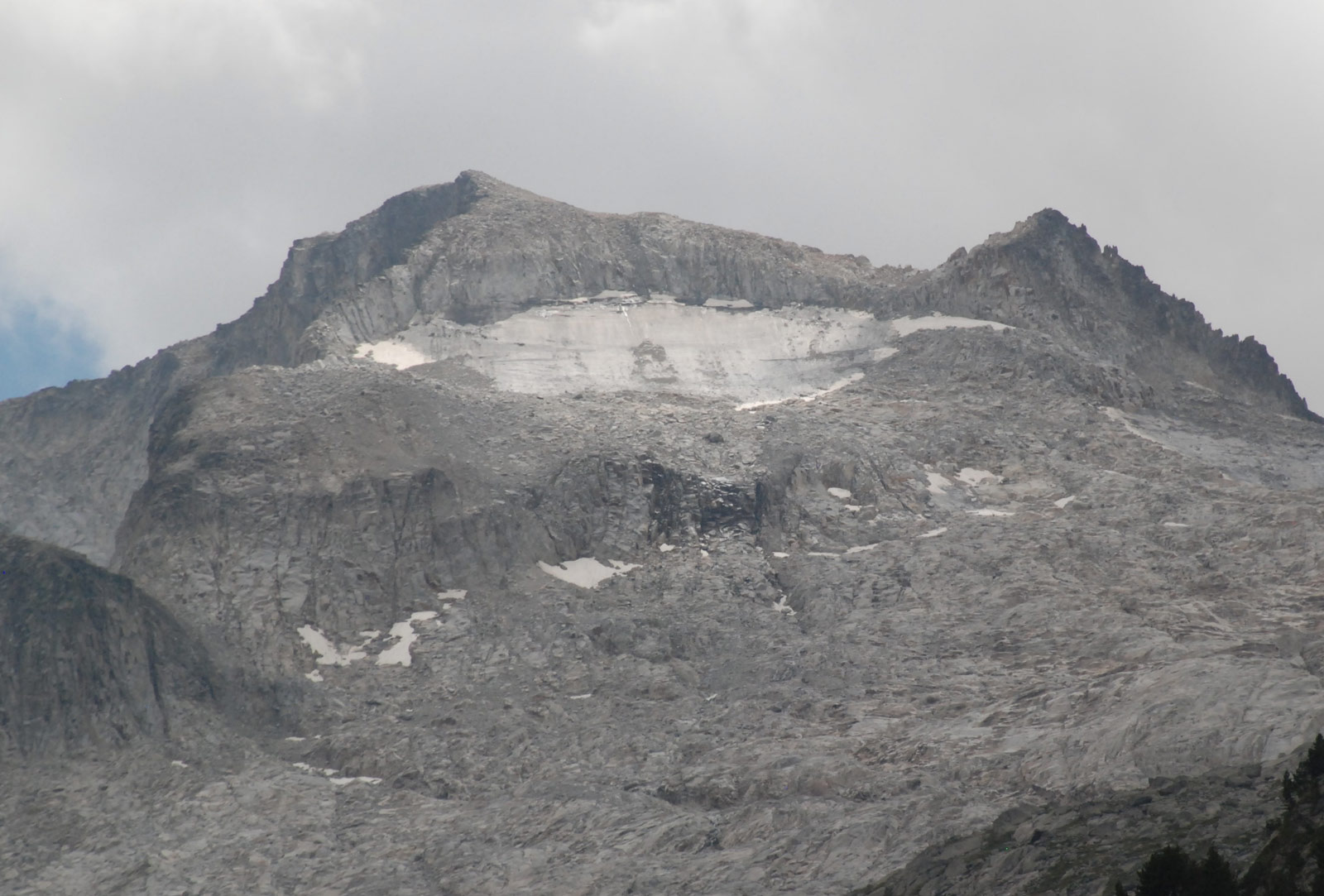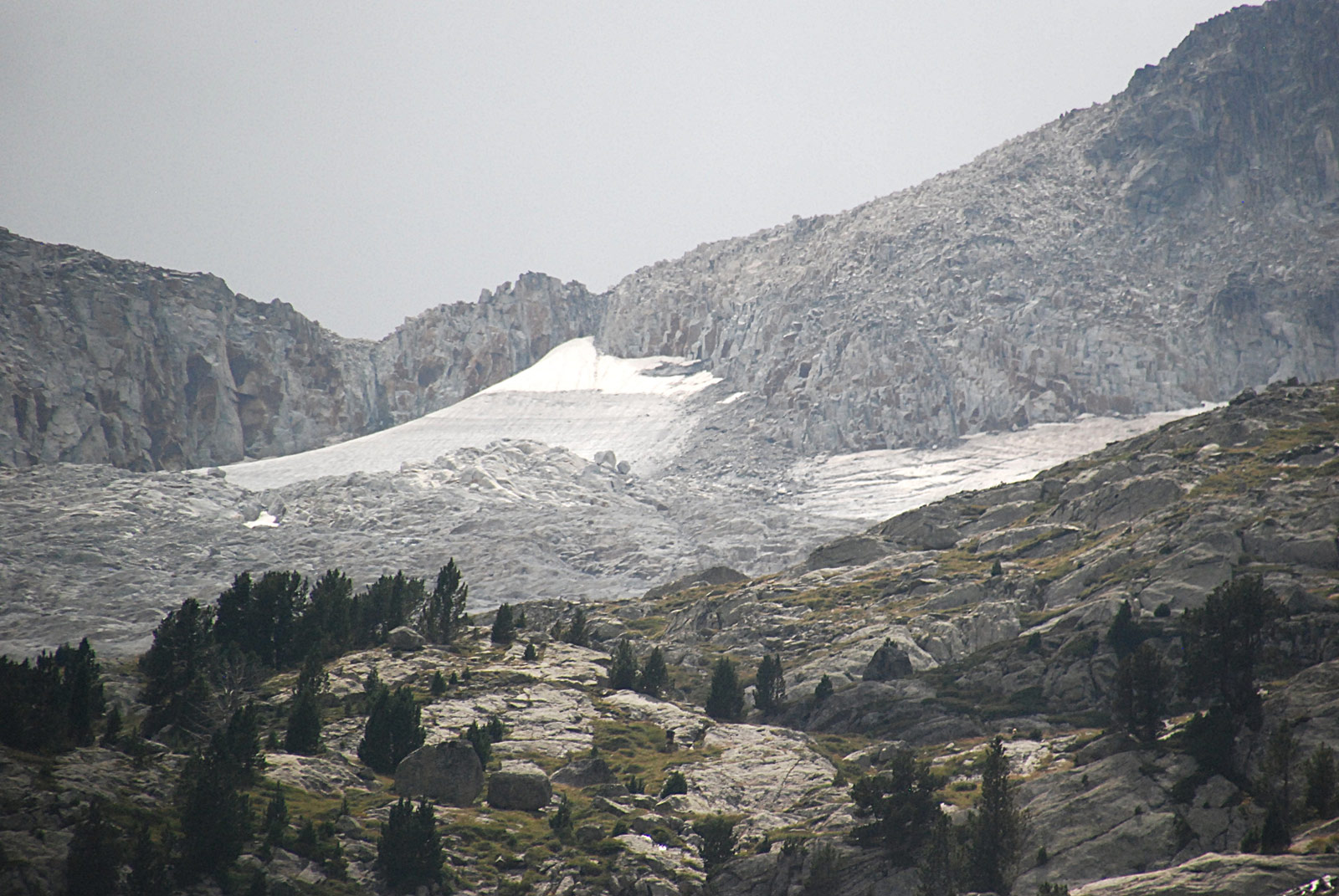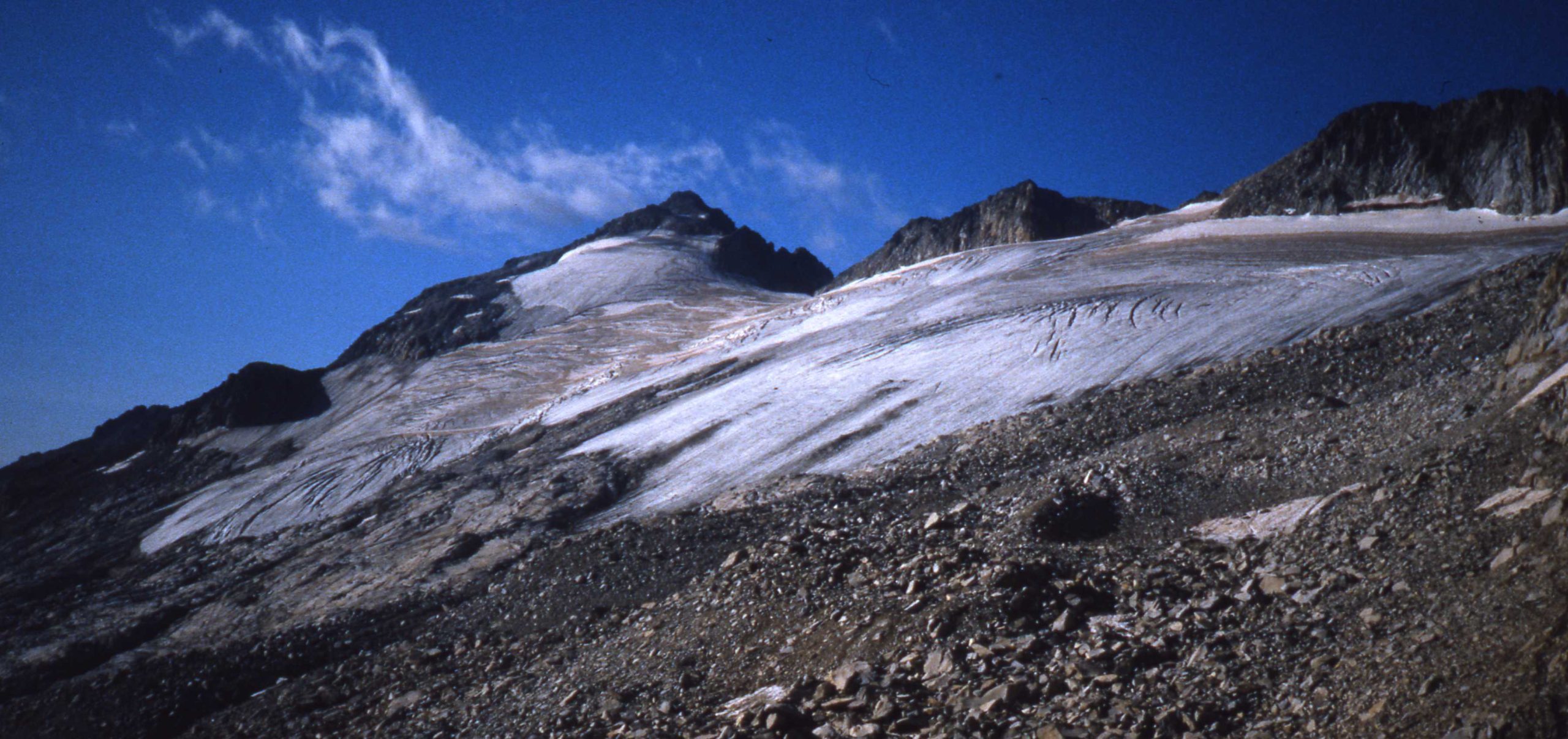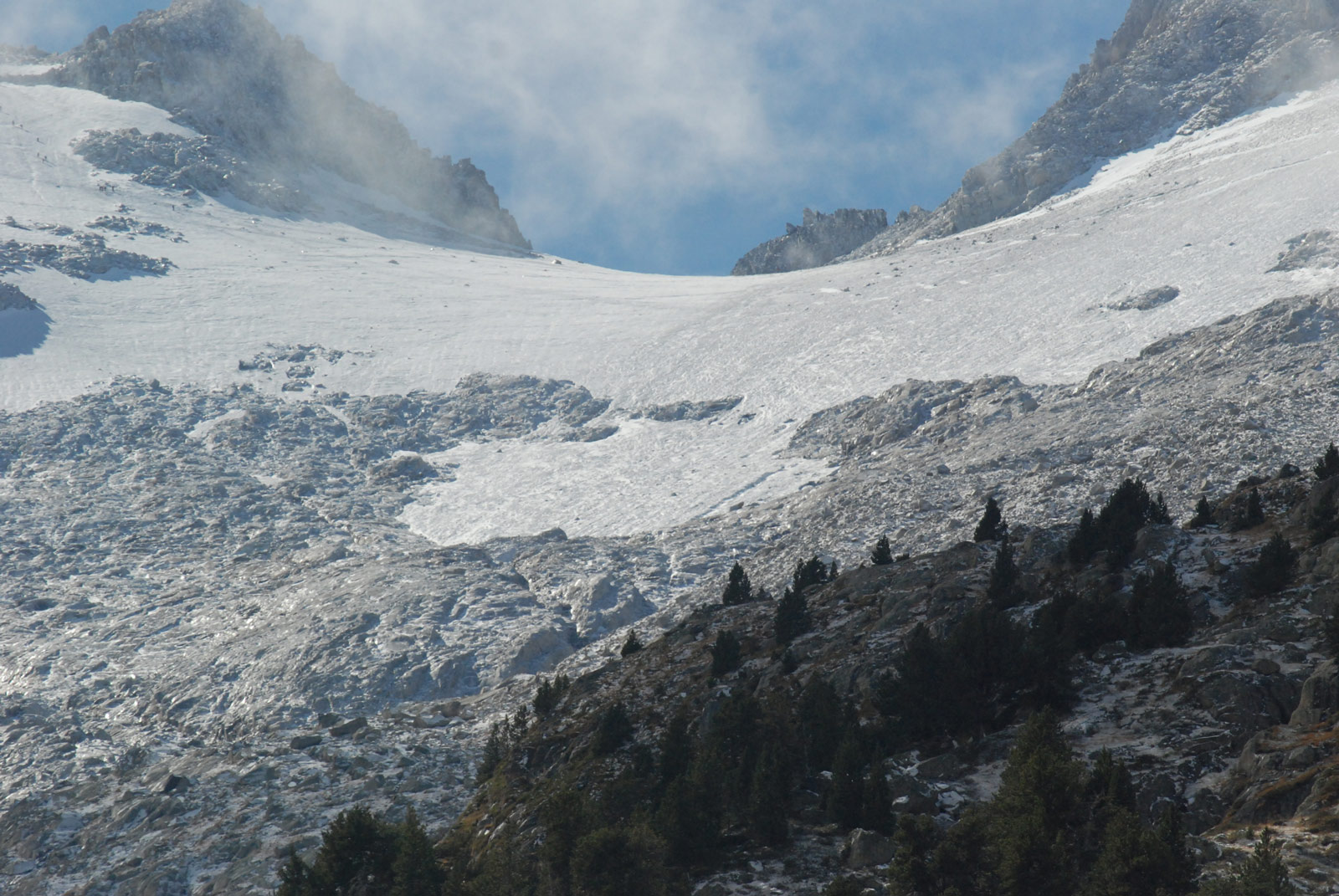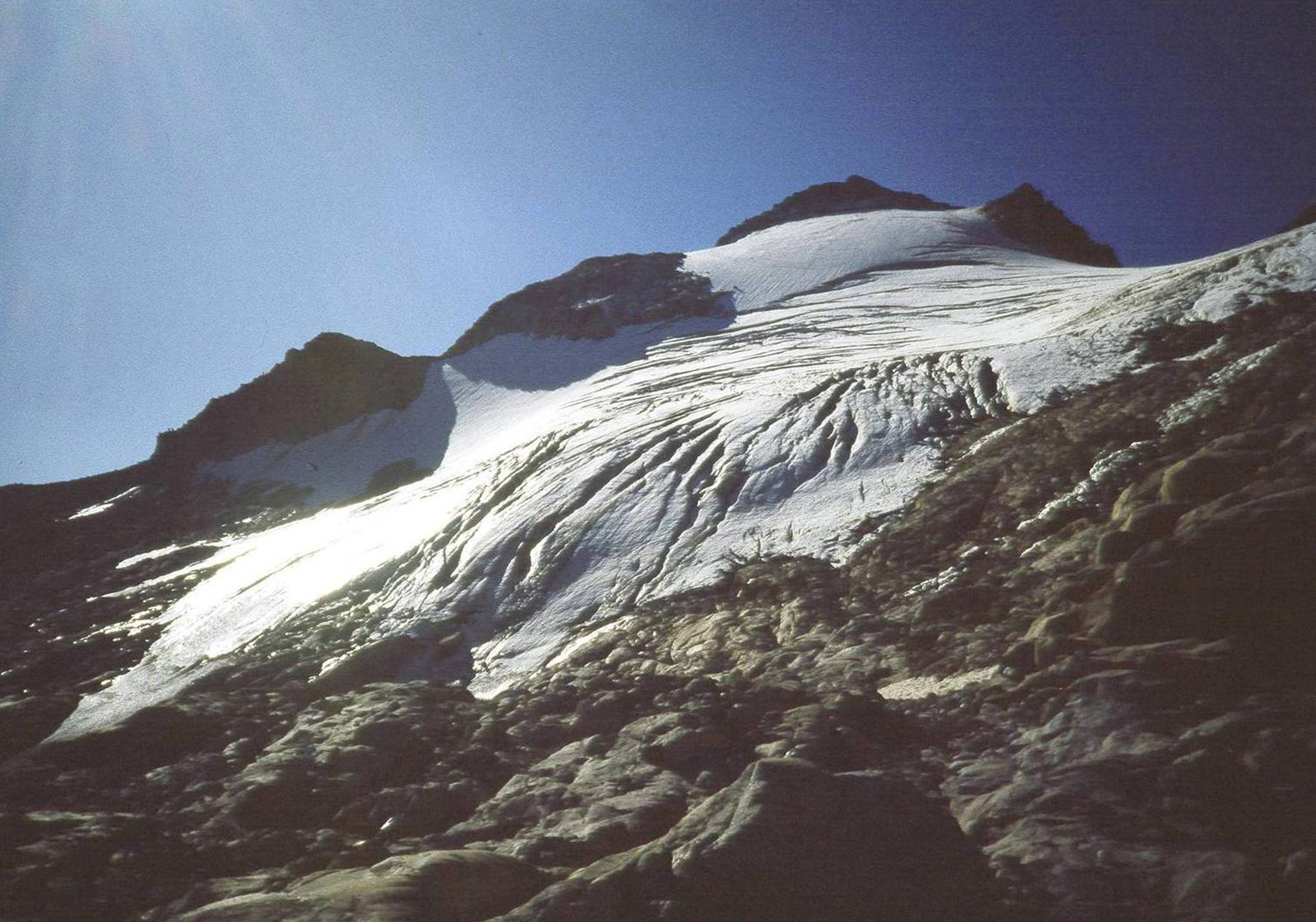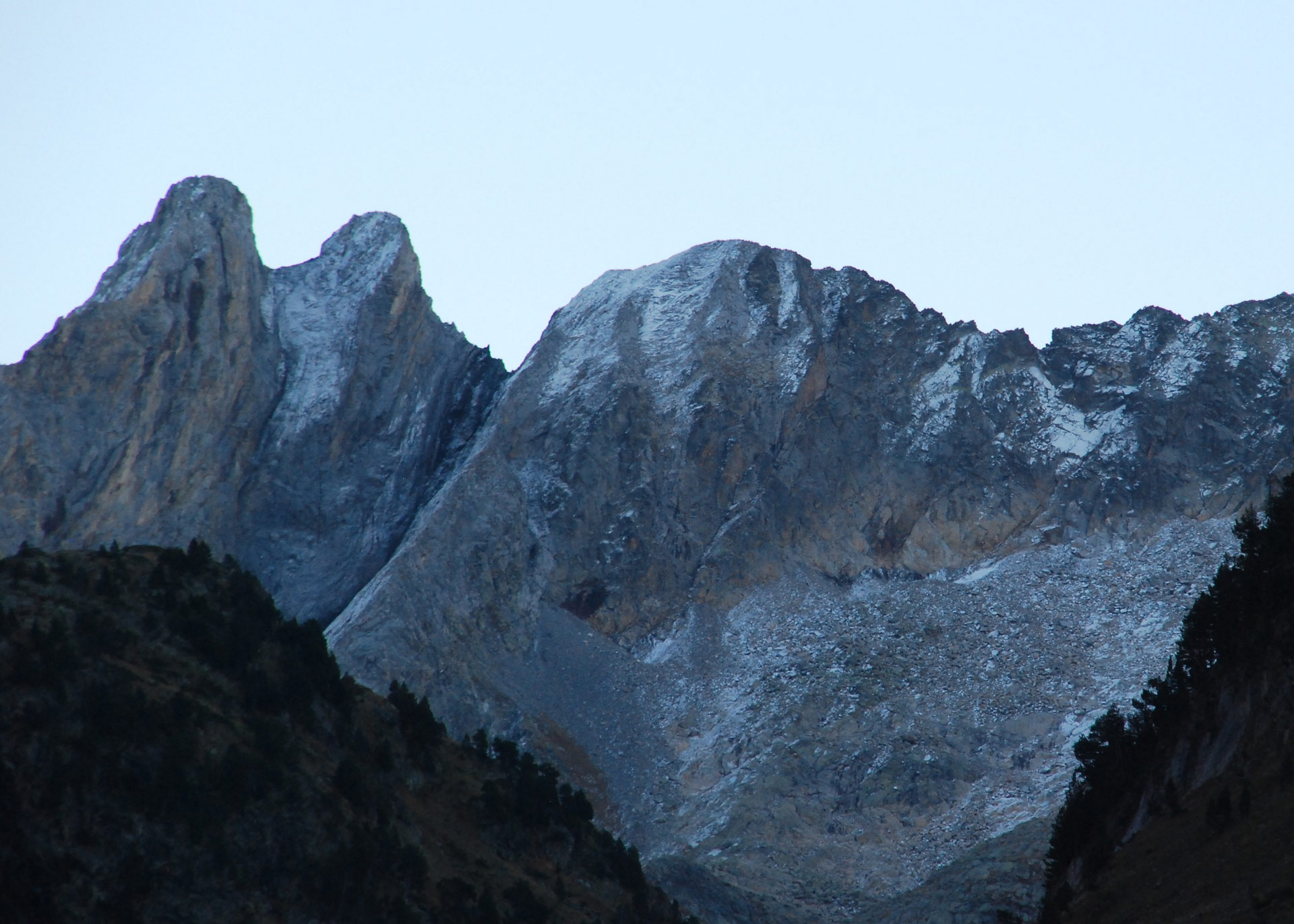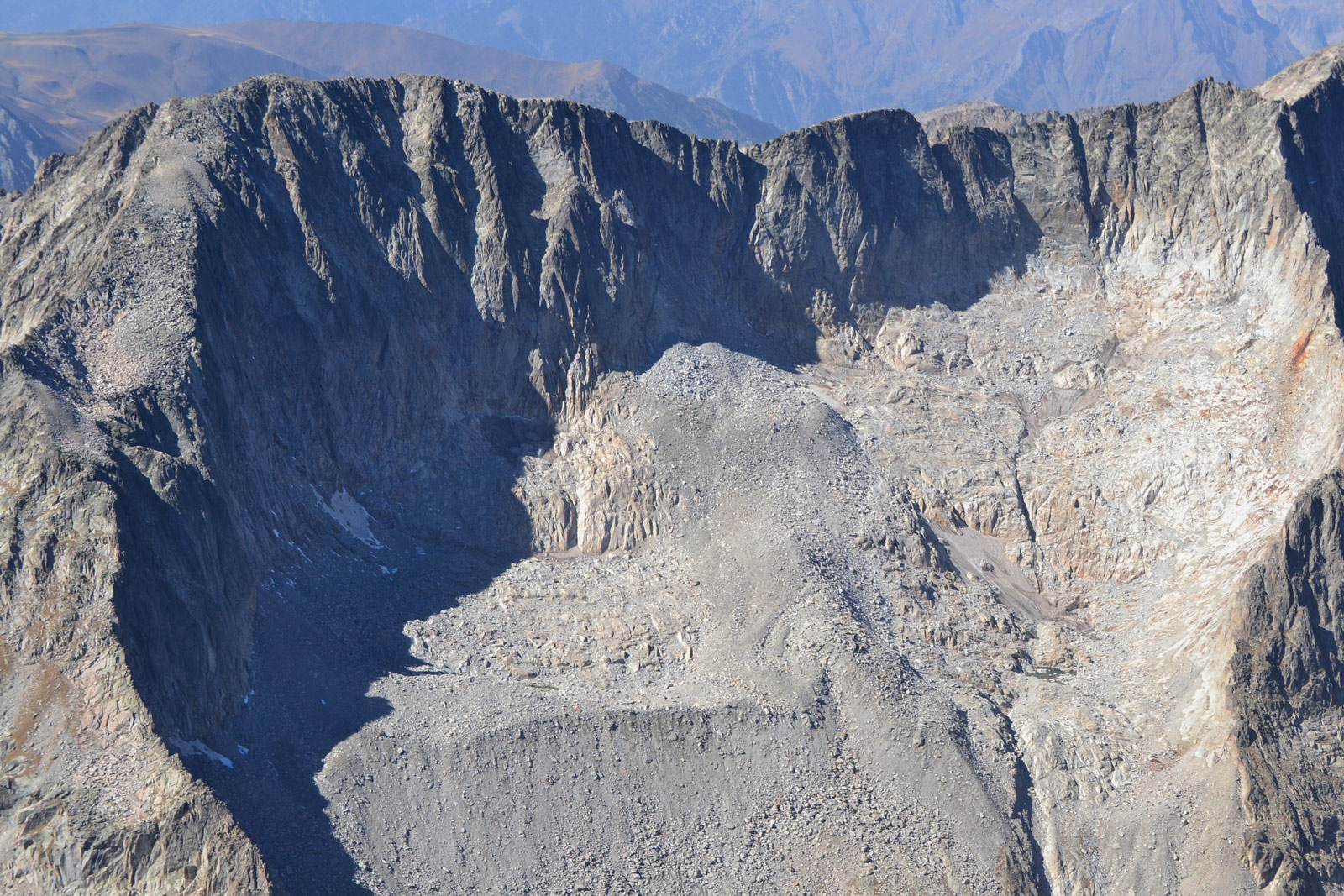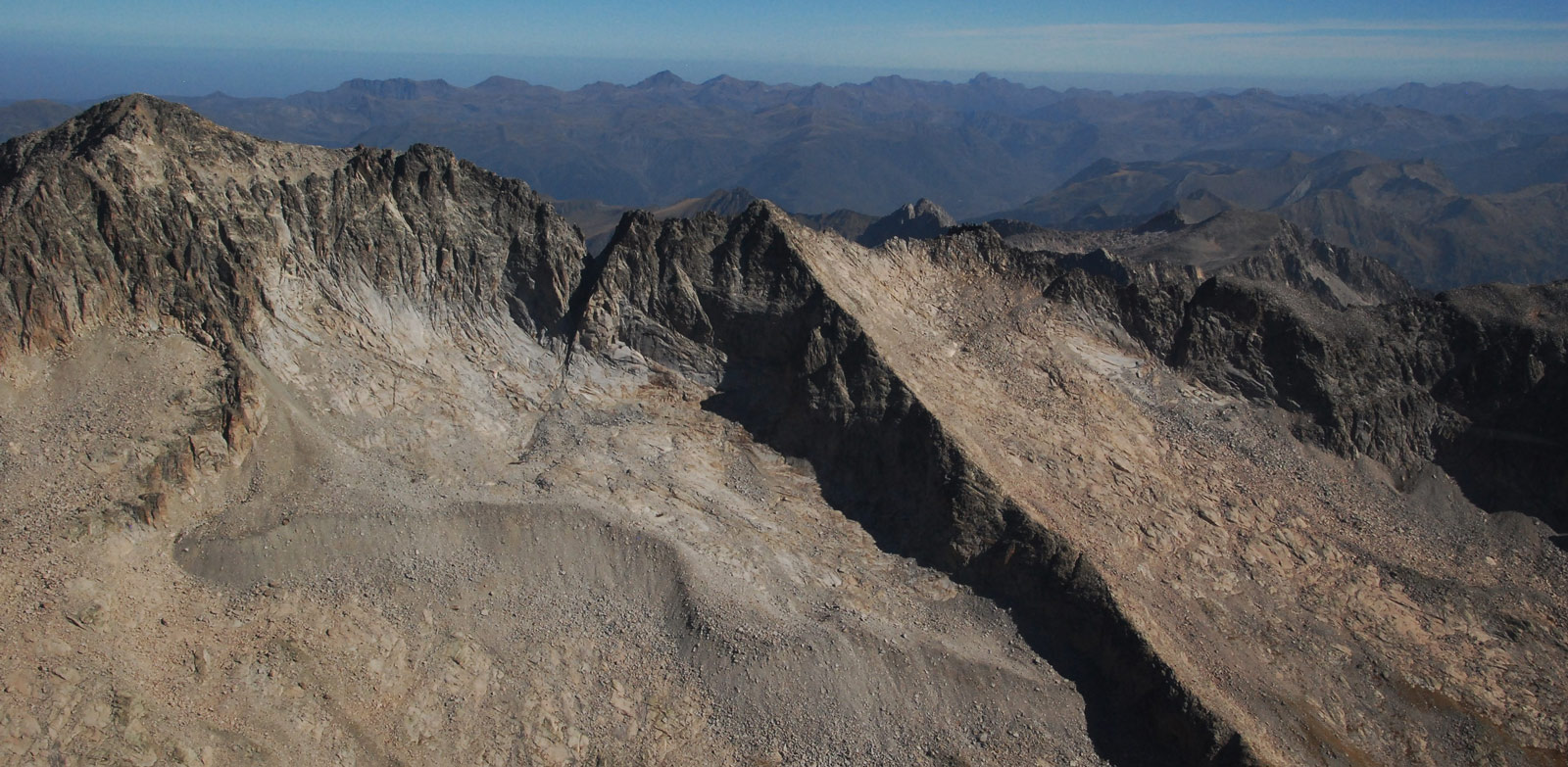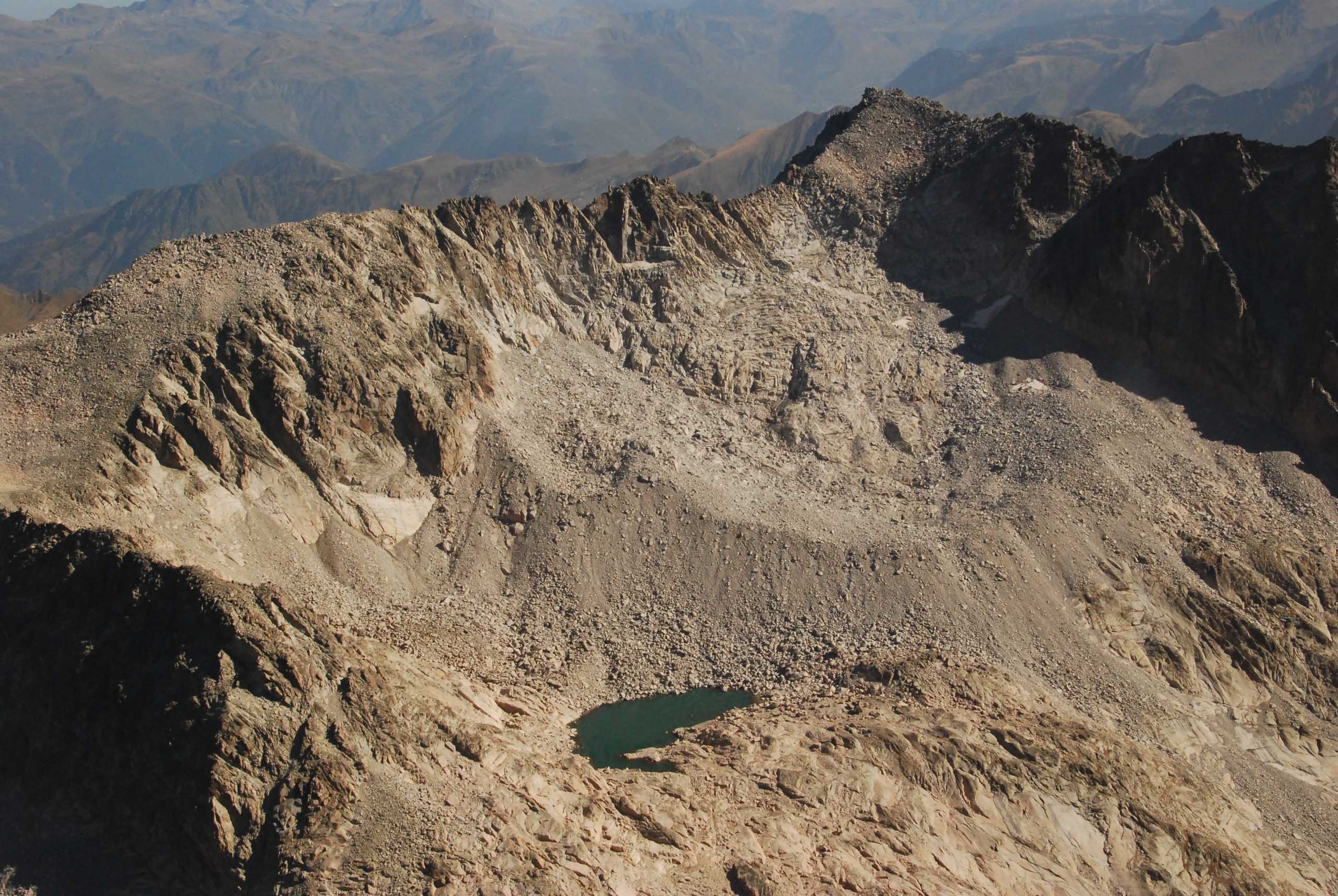Today, the Aneto Glacier retains little more than 10% of the 240 hectares it covered during the Little Ice Age, when its head was 1,800 metres wide and its two tongues (now lobes) reached lengths of 1,900 metres to the east and 1,960 metres to the west. Its former boundaries are clearly marked by the moraines that remain, which form a characteristic ‘W’ shape at the lower end, created by its two tongues. Currently, although shorter than it is wide, it is still the largest glacier in the Pyrenees and contains approximately 19.5% of the glacial ice in the entire mountain range.
Its retreat was similar in both lobes until just under two decades ago. Its length was between 1.2 and 1.3 km at the beginning of the 20th century and between 810 and 870 metres in 1984. From 2005 onwards, the regression process became more heterogeneous, resulting in multiple fragmentations:
- Fragment 11-2: on 9 September 2009, this split from the eastern lobe of the glacier, known as the Upper Aneto Glacier, became consolidated. In 2023, there were no longer any signs of movement, and it was reclassified as a Helero, with a current area of 2 ha.
- Fragment 11-3: in 2006, the so-called Helero de Punta Oliveras split off from the upper end of the eastern lobe. By 2012, it was considered residual and disappeared completely in 2022. Until its extinction, the eastern lobe was the highest fragment of ice in the Pyrenees.
- Fragment 11-4: on 19 August 2012, at the lower limit of the Eastern Lobule itself, another fragment of the so-called Lower Helero del Aneto split off and became extinct in 2017.
- Fragments 11-5 and 11-6: in 2005, the Eastern Helero of Aneto split off, which in 2012 was considered residual and disappeared in 2018.
The western lobe of the Aneto glacier is the most active sector of the entire massif. The narrow strip of snow that remains at the top provides minimal regeneration, but this is insufficient to increase the thickness of the ice. This lobe has gone from 52 m in 1997 to 26 m thick in 2012. In 2023, the loss of thickness caused the definitive separation of both lobes (11-1).
Regardless of the other splits, the Aneto Glacier has fragmented into two independent structures. The larger of the two is the western lobe, covering 18 ha, while the eastern lobe covers 5.7 ha, in addition to the 2 ha of the Helero Superior del Aneto.
During the retreat process, the melting of the glacier ice at the lower end has led to the appearance of a new lake, the unnamed lake. Its presence began to be detected in 2012 and it spread to reach 0.5 ha in 2021.
Este aparato glaciar pertenece al siguiente macizo:
11) Aneto
Comparativa de imágenes


Comparisons from 96 years ago from the Portillón Superior.
The Aneto Glacier in 1926 from the Portillón Superior. (Antoni Miralda – AFCEC).
The Aneto Glacier in 2022. Loss of overall area, particularly noticeable in the Helero Superior and Lóbulo Oriental. (Jordi Camins).


Comparisons of the last century in the Eastern Lobe
Between 1904 and 1913. (Juli Soler Santaló- AFCEC).
The Eastern Lobe and the fragmentation of what was then the Upper Aneto Glacier in 2009 (Jordi Camins).


Comparison of 32 years since the summit of Maladeta Oriental, 3,308 m.
An active, cracked and convex Aneto Glacier in 1987 from the Maladeta Oriental. (Jordi Camins).
Concave and weakened in 2019, with the newly formed ibón, transverse cracks and snow in the upper sector of the Western Lobe. (José Luis Piedrafita).


Comparison of 13 years (2010-2023), splitting and extinction of the Lower Helero in the Eastern Lobe.


Ten-year comparison (2005-2015) of the Punta Oliveras glacier sector.
The highest altitude ice in the Pyrenees at the upper limit of the Eastern Lobe. The rocky substrate began to emerge from the ice in 2005, which a year later would cause the split of the Oliveras Glacier (Jordi Camins).
2015 image of a now residual AG at Punta Oliveras. The human figures in both photographs help us to gauge the size of the sector (Jordi Camins).

